The Mikoyan-Gurevich MiG-25 “Foxbat” holds a distinct place in history. Designed by the Soviet Union, this renowned aircraft showcased cutting-edge engineering and became a symbol of Cold War air dominance. Created for high-speed reconnaissance and interception, its impressive speed astonished the West—until a Soviet pilot’s defection exposed its weaknesses.
Origins of the Mikoyan-Gurevich MiG-25
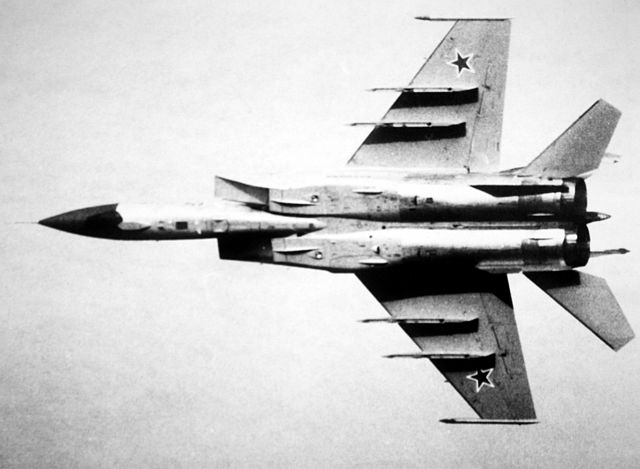
The inception of the MiG-25 arose from the urgent need to counter rapid advancements in Western aviation technology during the Cold War. This initiative began in the early 1960s, driven by Soviet military strategists who recognized the necessity of developing a reconnaissance aircraft capable of outpacing Western innovations, such as the North American XB-70 Valkyrie.
Engineers were assigned the challenge of creating an aircraft that could meet these demanding criteria. The result was a remarkable blend of speed and power, achieved through innovative design techniques and the use of materials such as nickel-steel, aluminum, and titanium. These materials played a crucial role in the MiG-25’s performance, allowing it to withstand the extreme temperatures generated at its impressive speeds.
Development was shrouded in secrecy
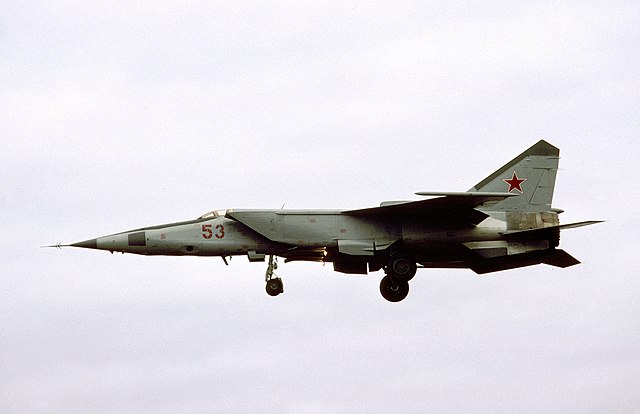
The MiG-25’s development was cloaked in secrecy, with only a handful of individuals outside the upper echelons of Soviet military and engineering knowing its full potential. This covert approach worked in the Soviet Air Forces’ favor by instilling fear in the West upon the aircraft’s reveal.
Several design options were explored for the MiG-25. One proposal suggested positioning the engines side-by-side, like in the Mikoyan-Gurevich MiG-19, while another explored a vertical arrangement similar to the English Electric Lightning. However, the concept of placing the engines in underwing nacelles was discarded due to concerns about thrust imbalance.
Other ideas, such as variable-swept wings, a second crew member, and vertical takeoff and landing capabilities, were also evaluated but ultimately not pursued.
The MiG-25 prototype, the Ye-155-R1, took its first flight in 1964. Through extensive testing and refinement, it became evident that the aircraft was not just a reconnaissance platform but also an interceptor, capable of reaching altitudes over 80,000 feet and engaging distant targets with its missiles.
This dual-purpose capability highlighted the MiG-25’s strategic value in Soviet defense, serving as a deterrent against potential Western threats while demonstrating the Soviet aerospace sector’s technological expertise.
Mikoyan MiG-25 specs.
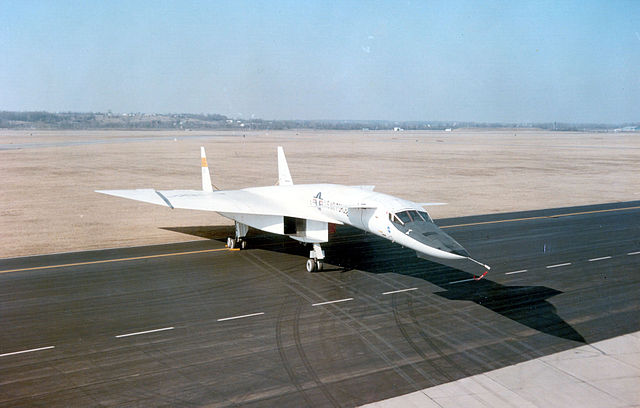
The MiG-25 was engineered for high-speed reconnaissance and intercept missions, exceeding expectations with its performance. Designed to outrun potential threats, it could reach speeds of up to Mach 2.83, thanks to its twin Tumansky R-15B-300 engines. Its large wing area further cemented its status as one of the fastest aircraft of the Cold War, making it a fearsome aerial opponent capable of evading incoming missiles.
In addition to its speed, the MiG-25 could climb to altitudes of over 80,000 feet, staying beyond the range of most enemy fighters and surface-to-air missiles (SAMs). Its versatility was enhanced by its ability to carry different types of reconnaissance gear and weapons, including the powerful R-40 long-range air-to-air missile, making it a highly valuable asset.
Variants of the Mikoyan-Gurevich MiG-25
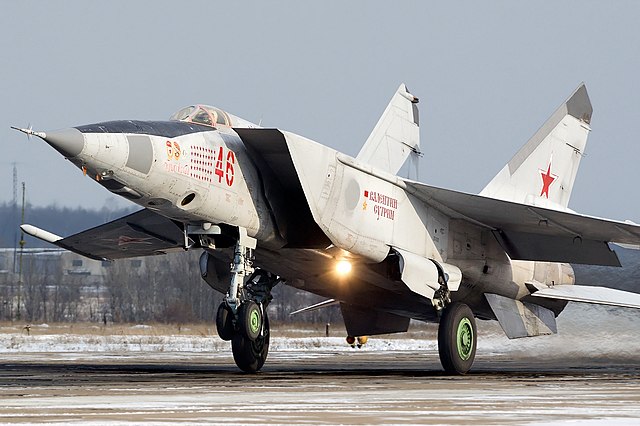
The MiG-25 gave rise to several variants. Among these, the MiG-25P stands out as the initial interceptor version, reflecting the aircraft’s core purpose of countering high-altitude reconnaissance flights. Its RP-25 Smerch-A1 radar and air-to-air missile systems were revolutionary at the time, establishing a new benchmark for air defense.
Complementing the interceptor was the reconnaissance variants, most notably the MiG-25R, which elevated intelligence gathering—quite literally. Outfitted with advanced cameras and sensors, it could efficiently collect data from deep within enemy territory.
The MiG-25RB expanded the reconnaissance model by adding strategic bombing capabilities. This variant not only performed high-speed, high-altitude photo reconnaissance but also engaged in electronic intelligence (ELINT) operations and carried out conventional bombing strikes. To enhance its bombing role, the Peleng automatic bombing system was introduced, capable of deploying eight 1,100-pound bombs.
Combat and reconnaissance missions

The MiG-25 has an operational history that’s spanned several decades and a variety of combat and reconnaissance missions. Its reconnaissance variants were among the first to provide the Soviet Union with crucial intelligence during the Cold War, flying at speeds and altitudes that made them nearly untouchable by enemy air defenses.
The aircraft’s robust design allows it to operate in environments, ranging from the scorching deserts of the Middle East to the frigid skies over Siberia, showcasing its versatility and reliability.
During the 1982 Lebanon War, MiG-25s conducted reconnaissance missions over heavily defended airspace, gathering invaluable intelligence, and many saw action against coalition aircraft during the Gulf War as part of the Iraqi Air Force. It also played a role in the Iran-Iraq War, where it was used by both sides for reconnaissance and strike missions.
Viktor Belenko defected to the United States

One of the most famous incidents involving the MiG-25 occurred in 1976, when Soviet pilot Viktor Belenko, who served with the 513th Fighter Regiment, 11th Air Army, Soviet Air Defence Forces (V-PVO), defected to the West. During a training flight, he flew to Japan, landing at Hakodate Aiport, where he was arrested for violating Japanese airspace. He subsequently requested asylum in the United States.
This provided the West with an unprecedented opportunity to examine the technology of one of the most elusive aircraft of the time, with then-Director of Central Intelligence George H.W. Bush calling the opportunity an “intelligence bonanza.” It was during this time that the West learned the MiG-25 wasn’t a fighter-bomber, like everyone had presumed, and, as such, it wasn’t really that much of a threat.
The analysis of the MiG-25 revealed its strengths and weaknesses, leading to advancements in Western military technology. The incident underscored the aircraft’s role not just in espionage, but also in the broader context of Cold War diplomacy and rivalry.
Replaced by the Mikoyan MiG-31
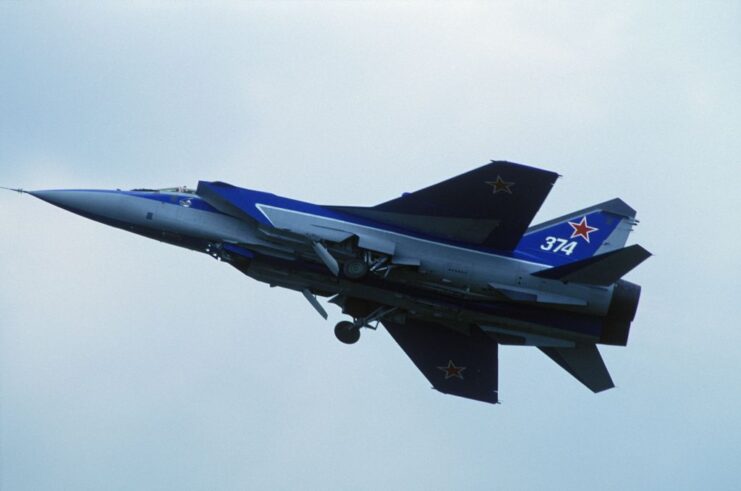
Over the decades, the MiG-25 has been operated by a number of countries outside of the Soviet Union and Russia, including Iraq, India, Syria and Lybia. Of these, Syria remains the only one to still operate the aircraft, with it reported that two “R,” 16 PD, eight RB and two PU variants were still in service as of December 2022.
More from us: A US Stealth Bomber Was Once Caught Mid-Flight On Google Maps
New! Want to become a trivia master? Sign up for our War History Fact of the Day newsletter!
The MiG-25 was ultimately replaced by the Mikoyan MiG-31 “Foxhound,” which entered service in 1981 and is estimated to remain active with the Russian Aerospace Forces until at least 2030.
